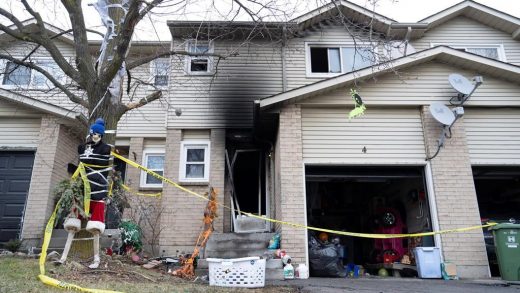
A council might be able to save a set of heritage buildings from the wrecking ball, but it can’t stop owners from demolishing them by neglect.
The Dunedin City Council wants to preserve only the facades of the historical but derelict buildings at 372-392 Princes St, but to the buildings’ owners that is preserving too much.
Fourteen years after the first request to demolish the lot was lodged, the owner is re-litigating whether the facades are worth keeping.
Located south of the Octagon in the heart of Dunedin’s old commercial precinct, the Victorian-style buildings date back to the gold rush era of the 1860s.
READ MORE:
* Christchurch developer pulls pin on decade-long Dunedin development
* Call for absentee landlord to be slapped with fees over dilapidated building
* Build it or sell it, Christchurch property developer told
They weren’t on Heritage New Zealand’s list of heritage buildings, but were on the Dunedin council’s protected list as they were “critical” to the original look of the area, former council heritage adviser Mark Mawdsley said.
386 Princes St held the most heritage value, but was in the worst state. Its architect was the first mayor of Dunedin – the first elected mayor of a New Zealand city – William Mason.
He also designed the Stock Exchange and St Matthew’s Church in Dunedin.
160 years later, it and the neighbouring buildings were being used as retail spaces and warehouses, housing news printers and graphic artists.
Sinead Gill/Stuff
Trees and other plant life are now poking through roofs between 372-392 Princes St, Dunedin.
Copthorne Holdings bought the set of buildings in 2006. The company directors were Christchurch-based developers Luke Dirkzwager and Geoffrey Yee, and Dunedin proprietor Kingsley Kung, who died in 2015..
Dirkzwager was named as a shareholder, while Yee’s separate company, Jadewynn Holdings, held a third of the shares.
In 2008, the company began the process of getting consent to demolish the buildings and replace them with a mixed residential and retail lot.
Council hearings, earthquakes and a 2014 Environmental Court ruling later, Dirkzwager was offered a compromise – demolish the buildings, but keep the facades.
Sinead Gill/Stuff
The shared veranda of some buildings have been propped up by scaffolding for years.
He had a deadline of five years, until July 1, 2021, to demolish, otherwise the consent would lapse. But the consent was extended.
In that time, no work appeared to be done on the buildings, but they deteriorated significantly.
All but two of the buildings had the doors locked and windows covered, but trees growing inside began poking through the roof, and could be seen by the public.
In the last few years, plants have broken through cracks in the protected facade.
Dirkzwager had already warned the council at a 2010 hearings committee keeping the facades would make the development too expensive, the Otago Daily Times reported.
Hamish McNeilly/Stuff
In this photo from 2018, ferns can be seen growing inside one of the buildings. Stuff understands these are still there.
New owner, same owner
Dirkzwager put the lot on the market in 2020, saying it would be best for someone to tackle the project locally.
Three months later, he sold it to co-director Yee for $630,500, at a loss of $12,500.
Stuff understands Yee paid about $270,000 less than what Copthorne Holdings asked from a Dunedin developer, who put in an offer in 2020.
The local would-be-buyer rejected the counter-offer because the buildings were in such disrepair.
Yee was approached for comment through a business associate, but has not responded.
The state of the lot
A commercially sensitive report, commissioned by Dunedin City Council in 2016 and obtained by Stuff, revealed the buildings were “at risk of demolition by neglect”.
The street veranda of 380 Princes St – which would be stabilised with scaffolding – was in “very poor” condition and a public safety risk.
At the time, just one tree was growing from the gap between it and 386 Princes St, possibly causing structural damage to both buildings. When viewed from above now, there appears to be more than one tree.
386 Princes St was in “extremely poor condition”, the report said, to the point it was unsafe and unsanitary to do a full inspection.
In a 2017 “notice to fix” report, a consultant engineer said some support beams had rotted or lost support when a wall fell. Salvageable beams were “propped to ensure there is no widespread collapse”.
Supplied
At least two of the properties are too dangerous to enter. Only two out of eight have tenants.
At some point, a shared wall between 374 and 376 Princes St collapsed onto the roof of number 376.
The report said those buildings were unsafe to enter, with “significant” rot in the floors, and beams that had rotted or collapsed.
Of the eight properties included in the lot, only two remain occupied.
The business owner of one property, who asked to not be named, said they knew there was a pending demolition notice, and they were just waiting to be told to leave.
Business owner Jay, of Daily Coffee Co, runs a cafe at 366 Princes St.
He said the buildings often wafted a smell down the street, and their deteriorating state was an eyesore.
At this point, he thought the council should allow the facades to be demolished, saying: “There are other original buildings that have more character and have been well-kept … those [the 372-392 Princes St facades] just look like ordinary old shops.”
Supplied
A photo from the inside of one of the buildings, taken in 2020.
Is it too late to save them?
Although Yee could not be reached to confirm, emails released under the Local Government Official Information and Meetings Act suggest the company may try to demolish the buildings on the grounds that they are dangerous.
An email exchange from February between council staff shows they were concerned an upcoming structural engineer report would be the “catalyst for the expeditious demolition of these buildings”.
A spokesperson said the council received the updated engineer’s report on Wednesday and was now reviewing it.
Council staff wanted to talk to Yee directly about how the council’s heritage fund could financially support the effort to preserve the facade, but a spokesperson said they had not been able to make that happen.
In his stead, a long-time consultant on the project, Allan Cubitt, told the council in June 2021 that the owner still wanted to demolish the facades.
“In reality, there is nothing special about these buildings. It’s not economic to keep them.”
Cubitt did not respond to a request for comment.


